5 Best Phones for Doordash in 2022 – Expert Guide
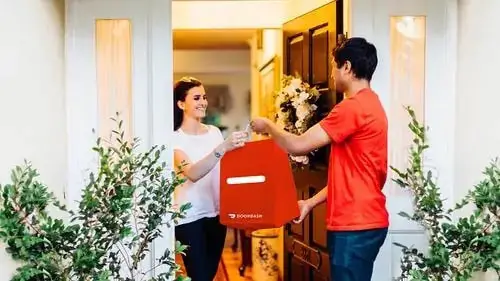
Hello my fellow Dashers. Today I want to share with you some tips about which phone is best for Doordash. I have learned this lesson the hard way when I was still a Dasher myself.
When I started to work for Doordash I had two phones. I had my personal one that I used for everyday tasks and I bought an additional phone that I intended to use for Doordash only. The problem with my second phone was that I was kinda trying to save as much money as possible at the time so I set a really low budget for this one. And boy was I wrong. My Doordash phone let me down so many times during my deliveries before I learned a lesson. From painfully slowing down from time to time, to battery draining very quickly, to random shutdowns, and more.
Long story short. I learned my lesson that buying a better phone will save you money and nerves in the long run. This is why I decided to research which phones would be most appropriate for Doordash.
DID YOU KNOW: Doordash was founded in 2013 by three college students. Obviously, the company has grown since then tremendously.
NOTE: Below you can find a comparison table and a detailed description of the best phones for Doordash.
TOP RECOMMENDED PHONES FOR Doordash
| BEST AFFORDABLE | RECOMMENDED | ||||
| Google Pixel 6 | Samsung Galaxy S22 | iPhone 13 Mini | Samsung Galaxy S22+ | iPhone 13 Pro | |
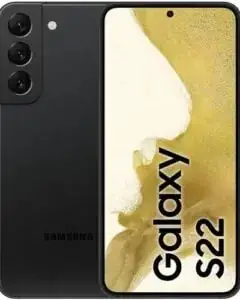 | 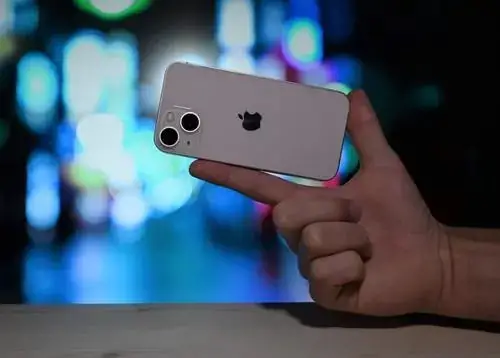 | 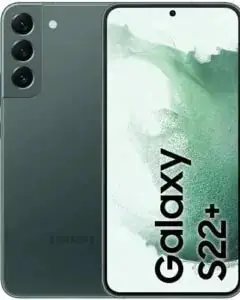 | 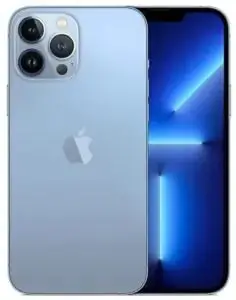 | ||
| Perfect For | Mind blowing photo capabilities | Overall use | Next level experience | Camera, gaming and web browsing | Next level experience |
| Display | AMOLED 90 Hz | Dynamic AMOLED 120 Hz | 5.4 ” super retina XDR OLED | Dynamic AMOLED 120 Hz | 6.1 ” Super Retina XDR OLED |
| Operating System | Android 12 | Android 12 | iOS 15 | Android 12 | iOS 15 |
| Memory | Up to 256GB (8GB RAM) | Up to 256GB (8GB RAM) | Up to 512GB (4GB RAM) | Up to 256GB (8GB RAM) | Up to 1TB 6GB RAM |
| Camera | 50MP wide, 12MP ultrawide | 50 MP Main, 10 MP Telephoto, 12 MP ultrawide | 12 MP | 50MP wide, 10MP telephoto, 12MP ultrawide | 12 MP (f/1.5, 26mm (wide), f/2.8, 77mm (telephoto),f/1.8, 13mm, 120Ëš (ultrawide)) |
| Battery | Li-Ion 4614 mAh | Li-Ion 3700 mAh | Li-Ion 2438 mAh | Li-Ion 4500 mAh | Li-Ion 3095 mAh |
| Sound | Stereo speakers | Stereo speakers | stereo speakers | Stereo speakers | stereo speakers |
| Sensor | Fingerprint optical | Fingerprint ultrasonic | Face ID | Fingerprint ultrasonic | Face ID |
| 1,395 Reviews | 150 Reviews | 595 Reviews | 21 Reviews | 250 Reviews | |
| $469.50 | $726.00 | $547.99 | $799.99 | $949.99 | |
| Buy on Amazon | Buy on Amazon | Buy on Amazon | Buy on Amazon | Buy on Amazon |
What are the best phones for Doordash?
Google Pixel 6 – best affordable phone for Doordash photography
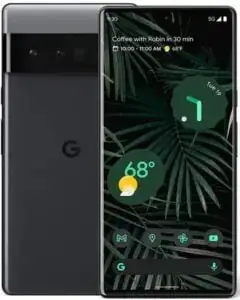
| HARDWARE | 8/10 | |||
| BATTERY LIFE | 8/10 | |||
| DISPLAY | 9/10 | |||
| MEMORY | 8/10 | |||
| VALUE/PRICE | 9/10 |
| CUSTOMER REVIEWS |
Key Features
|
|
|
Detailed Review
Google Pixel 6 comes to the list of best phone for Doordash photography as a strong mid-range phone with a good price to value ratio.
As a Pixel user, you can count on long and fast updates. But the hardware is also pleasing: the display is great and photos are great in most conditions. The special AI and AI functions of the Tensor chip expand the possibilities in everyday life.
The Pixel 6 has a 6.4-inch OLED display in 20:9 format with a resolution of 2400×1080 pixels. This results in a good sharpness of 411 ppi (pixels per inch).
Like the Pro, the Pixel 6 has Google’s Tensor chip, which was created in cooperation with Samsung. The Titan M2 is responsible for an extra hardware security layer. Tensor is not primarily about maximum computing power. However, the focus is on AI (artificial intelligence) and ML (machine learning). This should make itself felt, for example, in speech recognition or when taking photos.
There are two cameras on the back. The main camera has an internal resolution of 50 megapixels, but it ends up throwing out a 12.5-megapixel photo due to pixel binning. The ultra-wide-angle lens turns 48 into 12.5 megapixels. Like the Pro, the Pixel 6 is said to capture up to 150 percent more light thanks to the significantly larger image sensor compared to the Pixel 5, which is particularly worthwhile for photos taken under poor lighting. Even in the worst light conditions, the “Night Vision” mode still brings out amazing details with unexpectedly natural colors. Photos are good with the Pixel in almost all conditions and better than most top-of-the-line smartphones.
The camera only falls short when zooming. But this is to be expected without a dedicated telephoto camera. In this case, the Pixel 6 Pro might be a better choice.
- Great screen
- Good photo quality
- Wireless charging
- Waterproof and 5G
- No memory card slot
- Smooth back
| LEARN MORE | OR | CHECK PRICE |
Samsung Galaxy S22

| HARDWARE | 9/10 | |||
| BATTERY LIFE | 7/10 | |||
| DISPLAY | 9/10 | |||
| MEMORY | 10/10 | |||
| VALUE/PRICE | 9/10 |
| CUSTOMER REVIEWS |
Key Features
|
|
|
Detailed Review
When talking about the best phone for Doordash photography we cannot go past the Samsung Galaxy series. The Galaxy S22 is the smallest of the new line with its 6.1-inch display.
You are getting a very similar design to last year’s Galaxy S21, just a little bit smaller, a little more squared off and with a glass back instead of plastic.
The phone offers IP68 protection and the best ultrasonic fingerprint sensor in the game.
The S22 has a 1080p 120 Hz refresh rate display with an adaptive AMOLED panel and 1300 nits of brightness. You will have no problem viewing the content on the screen even under daylight. One cool feature to mention is definitely the ability to modulate the display refresh rate all the way down to 10 Hz to save battery.
The cameras on S22 got a major upgrade. You have a 50 MP main shooter with optical image stabilization, 10 MP telephoto with 3X optical zoom, and a 12 MP ultrawide. Ultrawide camera is also used to capture macro shots and is triggered automatically when you focus close to an object. In macro mode, the camera provides excellent results, better than any dedicated macro camera.
Regarding performance there is no question, this phone delivers. It features the latest Snapdragon 8 Gen Chipset and 8 GB of RAM. Even the most demanding games are running smoothly at ultra settings.
- Strong performance
- Fast fingerprint reader
- Overall great camera quality
- Very good display quality, especially brightness and contrast
- No charger included
- Sometimes sluggish loading times
| LEARN MORE | OR | CHECK PRICE |
iPhone 13 Mini
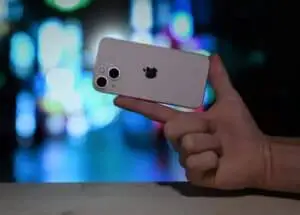
| HARDWARE | 9/10 | |||
| BATTERY LIFE | 10/10 | |||
| DISPLAY | 8/10 | |||
| MEMORY | 9/10 | |||
| VALUE/PRICE | 9/10 |
| CUSTOMER REVIEWS |
Key Features
|
|
|
The iPhone 13 mini is practically identical to the iPhone 12 mini as most of the design is the same. But there are some important changes we need to mention. The iPhone 13 mini is heavier and thicker compared to iPhone 12 mini, and that is because of the larger battery. This means that the cases for iPhone 12 mini might not fit well for the new phone. Because the phone is so small, holding it feels natural and easy. To our surprise, the iPhone 13 mini is one of the most durable iPhones there are, and that is mainly due to its compact build. The phone has a ceramic shield on the front, an aluminum frame in the middle and it has a corning-made rear panel. iPhone 13 mini will have no issues at the beach or by the pool, as it has great dust and water resistance ratings. Apple went above and beyond for this product, and tests have proven that it can handle at least 30 minutes under 60 meters of water.
DISPLAY:
iPhone 13 mini has a 5.4 ” super retina XDR OLED display with a 60hz refresh rate. The screen itself is great with an excellent 831 NITs of max brightness and with a pixel density of 476 PPI it has the sharpest screen on this year’s iPhone lineup.
BATTERY:
The 2438 milliamp-hour battery seems tiny by today’s standards but it’s a 10% increase over last year. Apple’s 20-watt charger gets the phone from zero to 61 percent in half an hour and a full charge took an hour and 24 minutes.
CHIPSET:
Like the rest of apple’s iPhone 13 lineup the mini has the A15 Bionic chip, but where it differs is that it has 4GB of RAM instead of the 6 GB on the pro models. This is the fastest mobile chipset to date and it is way ahead of the Android competition. You’ll definitely have plenty of power for years to come.
CAMERA:
The iPhone 13 mini supports a 12MP (f/1.6, PDAF, sensor-shift OIS) main camera with a bigger sensor than last year and sensor-shift stabilization along with a 12-megapixel ultrawide camera with fixed focus. These are the same ones you’ll find on the iPhone 13. The iPhone can record up to 4k video at 60 frames per second with both cameras. All videos are digitally stabilized and they all feature expanded dynamic range thanks to smart HDR. iPhones usually have excellent video quality and naturally, the iPhone 13 mini can capture some of the best videos in the mobile business.
CONCLUSION:
The iPhone 13 mini isn’t a huge jump from the 12 and the annoying notch, while smaller, is still around. The screen still doesn’t have a high refresh rate and the ultra-wide is only fixed focus. Other than that, it has a beautiful durable, and lightweight design and it has the same excellent speakers, top-notch camera quality, and a powerful chipset as its siblings. Simply put, if you’re looking for a compact flagship this is the best one on the market and we highly recommend it.
- Very good chipset.
- Great battery life.
- Practical
- Small display.
| LEARN MORE | OR | CHECK PRICE |
Samsung Galaxy S22+ – best phone for Doordash photography

| HARDWARE | 9/10 | |||
| BATTERY LIFE | 9/10 | |||
| DISPLAY | 10/10 | |||
| MEMORY | 9/10 | |||
| VALUE/PRICE | 9/10 |
| CUSTOMER REVIEWS |
Key Features
|
|
|
Detailed Review
When talking about the best phone for Doordash photography we cannot go past the Samsung Galaxy series. The Galaxy S22+ is noticeably larger than its smaller brother, which also brings some benefits.
The most obvious one is a bigger and brighter display. The S22+ features a 6.6 inch Dynamic AMOLED display with 1750 nits peak brightness.
Thanks to an almost 90% screen-to-body ratio the phone is still slim and compact enough to be able to comfortably store it in your pockets. However one of the most distinctive features of this year’s display doesn’t come from hardware but software. The phone is able to reduce screen refresh rate down to 10 Hz when not needed. This greatly improves battery life.
The phone has 3 cameras. A 50M wide standard, 10MP telephoto with 3X optical zoom and a 12MP ultra-wide which also acts as a macro camera. The macro mode is triggered automatically when focusing on an object from a close distance. The telephoto lens is especially great too and optical zoom can be used on a variety of occasions. The phone is great at capturing night photos as well.
Performance is certainly not an issue as this phone features Snapdragon 8 Gen and comes with 8GB of RAM. The chipset can handle any demanding game without really breaking a sweat. And it is perfect for stuff like watching videos, social media browsing, websurfing and multitasking.
Whether you are considering this phone for its cameras of performance, you won’t be disappointed in any case.
- Beautiful and very bright display
- Powerful performance
- Faster 45W charging
- Improved camera set
- Battery life could be even better
| LEARN MORE | OR | CHECK PRICE |
iPhone 13 Pro Max

| HARDWARE | 10/10 | |||
| BATTERY LIFE | 9/10 | |||
| DISPLAY | 10/10 | |||
| MEMORY | 9/10 | |||
| VALUE/PRICE | 10/10 |
| CUSTOMER REVIEWS |
Key Features
|
|
|
The iPhone 13 pro max’s outward design hasn’t changed very much. The phone has glass on the front and back, along with a shiny stainless steel frame. The layout is otherwise unchanged too, the notch is a smidge smaller and the camera bump is just a little larger. That’s the biggest change that you’ll see, but if you pick the iPhone 13 pro max up you will notice that it’s heavier than before, weighing 240 grams, which is pretty heavy for a smartphone.
The 13 pro max can survive up to 6 meters underwater for 30 minutes. The display’s cover glass, the ceramic shield by corning, once again offers some of the best protection in the industry, though it will shatter and scratch if you abuse it. The screen itself it’s a 6.7″ (OLED, 1284×2778,120Hz refresh rate) with a pixel density of 458 PPI. For the first time, Apple is introducing a high 120-hertz refresh rate on its phones. Some games can’t fully utilize it just yet, but aside from that, the feature is executed very well. The display can drop down to as little as 10 hertz and then jump up to 120hz on the fly, depending on whether you’re touching the screen and the current content. It has a wide color gamut and pretty much flawless color accuracy. With an excellent 1050 nits in auto-brightness, this is one of the brightest panels on the market.
CAMERA:
The biggest update with the pro max model this year must be the cameras. All three rear cameras have been improved. The 12 megapixel main sensor has larger pixels than before, the largest single pixels in a smartphone in fact. The 12-megapixel telephoto now has optical three times zoom instead of 2.5 times. The 12-megapixel ultrawide sensor lets in more light and now has autofocus so it can double as a macro cam. There is a lighter scanner too and it helps the three cameras with depth maps for better portraits and faster autofocus. In low light only the selfie camera is the same 12 megapixel unit as before. During the day the 13 pro max takes very good photos with the main camera and of course, they have a very iPhone-like flavor. Colors are accurate, detail is good and noise is non-existent.
CHIPSET:
The iPhone 13 pro arrives with Apple’s latest A15 Bionic, 6GM RAM chipset. The phone is equipped with 6GB of RAM versus 4GB of RAM on the non-pro models. Performance-wise the pro max is way ahead of its Android competition, its closest rivals are actually last year’s iPhones. The new chipset improves last year’s performance by 10% and it is the fastest chipset in a phone to date. The one concern we do have is that the GPU was quick to throttle and we would have liked to see a better-sustained performance. The 13 pro max comes with ios 15.
AUDIO:
The audio quality from its speakers was similarly impressive. The iPhone 13 pro max has a bottom-firing speaker and it uses its earpiece as a second channel. The speakers are among the best sounding speakers that you can get on a phone.
BATTERY:
The MAX comes with a 4352 mAh battery, which is the biggest one that Apple has ever put in an iPhone. The 13 PRO MAX has a 121-hour battery life. This phone will likely survive a full day or two of heavy usage. Unfortunately the iPhone ships without a charger. Using Apple’s 20-watt charger, the 13 pro max goes from 0% to 42% in half an hour. The phone supports charging up to 27 watts, so if you get a more powerful adapter you can get up to 55% in half an hour.
CONCLUSION:
The screen is fantastic. the stereo speakers are great. Performance is still unmatched and the battery life is simply class-leading. Photo and video quality is great across the board too, but is this the most innovative phone ever? Hardly, but it offers a very solid experience in pretty much every department and of course, it’s the best iPhone ever, so if you’re upgrading from an iPhone that is older than the iPhone 12 pro, we definitely recommend it.
- Very good chipset.
- Great battery life.
- Amazing value for the price you pay
- Pricey
| LEARN MORE | OR | CHECK PRICE |
Additional hardware information
CPU
The processor is the central processing unit in an electronic system such as a smartphone. The alternative and common English designation is CPU (Central Processing Unit). A processor is used to control various processes in the system. It handles task management and the distribution of data between individual units. The gigahertz value of a processor indicates its performance. It denotes the clock frequency with which the processing unit executes processes.
A cell phone processor works analogously to the CPU of a computer or controller in an electrical device. It processes individual instructions and program sections sequentially or simultaneously. At the same time, it manages data processing in the cell phone, for example during copy operations from the internal memory to a memory card or another device. The processor can consist of one or more computing cores that form the heart of an electronic system. In a smartphone, the CPU is responsible for the following tasks, among others:
- Execution of installed applications
- Controlling graphical displays via the graphics card
- Establishing connections such as WLAN or UMTS
- Processing user data
In simple words, the more powerful your CPU is, the better the game will run.
GPU
The GPU (Graphics Processing Unit) is a dedicated graphics processor in mobile devices. Its main task is to support the smartphone processor (CPU) in displaying 3D data. Including image processing, games, animations, VR applications, and augmented reality. A strong GPU affects the performance of the entire device and can also significantly improve energy efficiency. Therefore the battery capacity is exhausted more slowly.
With the constantly increasing specifications of mobile devices, especially due to ever higher display and camera resolutions, the role of the GPU is becoming more and more important. Accordingly, improved models are constantly entering the market. In system-on-a-chip (SoC) designs, the GPU is lasered into a chip together with the main processor and other components (multimedia processor, LTE modem, signal processor).
RAM
As soon as you execute a program, the associated data is stored in RAM. This means that programs load faster and are still available, even if you have already closed them. When you open an app, it loads all data into RAM the first time you start it. If you now close the app and start it again, the loading process takes less time. The data remains in the RAM as long as the device is supplied with power. If you turn off your smartphone or computer, all data stored in RAM is lost and has to be reloaded when you restart your apps and programs. Don’t worry, the draining of the memory does not affect any data that is in the main memory. So pictures, videos, and co. are still safe even after the power is turned off.
How long the app data remains in the RAM of your phone depends on how much it is available and how much of it other apps are using it. But the more you have it the better. And this is true also if you want to achieve the best gaming experience.
DISPLAY
The display is the most obvious component of a smartphone. It is the showcase for all content and the surface through which you interact with the device. The screen turns the built-in components inside out: It shows whether a smartphone works with a strong or weak chipset via smooth or jerky animations. It lets you judge the quality of the camera. And of course, it shows all the data and apps that are in the device’s memory.
Currently, two panel types are mainly found in smartphones: IPS LCD and OLED. In LCD (Liquid Crystal Display) technology, the individual pixels consist of liquid crystals that, in combination with a polarization filter, display a certain color depending on their orientation. In an IPS panel (In-Plain-Switching), the crystals are constructed in such a way that the display is particularly viewing angle stable. The flat backlight is crucial for the LC display.
The main advantage of OLEDs over IPS is the lower energy consumption. Especially with dark content, even illumination, and high contrast. One disadvantage is that the LEDs lose their luminosity to some degrees due to uneven use. This can result in a burn-in effect. Since the display substrate for the OLED matrix is often made of flexible plastic the phones can also have curved displays. OLED displays are being used more and more, especially in high-end phones.
BATTERY
The battery capacity of your phone does in principle tell you how long it will last before you need to recharge it. The bigger the battery the longer it should last. But it depends also on the power consumption which is in direct correlation with the hardware that is included in the phone, and the battery management algorithms that try to reduce the consumption and preserve the battery as much as possible. Except for the battery capacity, these values are never written in the specification of the phone as they are irrelevant for an average user.
The reason is that the biggest factor to how long your phone will last on one charge is how much you use it and how. For example the screen is one of the biggest energy consumers. So if you are using your phone a lot the battery will get drained quicker, obviously. Heavy multitasking and gaming are also energy demanding.
But nowadays many phones support fast charging, wireless charging etc. So you can charge your phone very quickly and you are good to go.
Best phone for Doordash – CONCLUSION
It is well known that smartphones tend to get a little “slower” over time. Additionally, battery life gets weaker. So to be on the safe side a good rule of thumb is to pick a phone that has at least one grade better components than recommended.
Any phone from our list will give you the best experience. So if you stay within our selection of best phones for Doordash you are good and ready to go. Have fun dashing.